A Step-by-Step Guide to Whitefly Control
Since the 1970s, the emergence of whiteflies (particularly the Greenhouse Whitefly (Trialeurodes vaporariorum) and Tobacco/Silverleaf Whitefly (Bemisia tabaci )) has evolved into a menacing challenge. Escalating resistance to pesticides over time has compelled researchers to delve into multiple biological control methods to combat major infestations. This journey from conventional pesticide focused approaches towards biologically based IPM (Integrated Pest Management) strategies highlighted the need in many cases for a multi-pronged approach.
Whiteflies have a strong liking for various crops, including Tomato, Gerbera, Roses, Poinsettias, Eggplants, Peppers, Cucumbers and occasionally Cannabis. Predatory mites, parasitic wasps, entomopathogenic fungi and the use of sticky traps or tape are all important tools in the IPM strategy for these crops. They integrate diverse control mechanisms to target various stages of the whitefly life cycle.
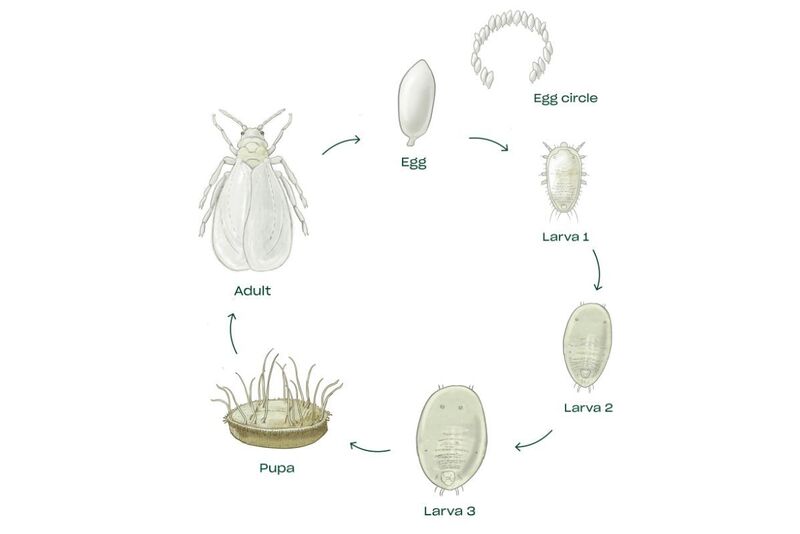
Why do I need multiple BCA’s (Biological Control Agents) to control whiteflies? While chemicals often target multiple stages of a pest, most biocontrol measures are specific to certain stages only. This means multiple tools are needed to break the life cycle and reduce pest pressure.
In this article, we will dive deeper into the realm of whiteflies unveiling the most effective beneficial organisms, as various crops and whitefly species require different strategies of approach.
- For example, predator mites do not work well on tomatoes due to higher amounts of plant resin, but they are powerful tools on most other crops.
Our aim is to provide you with invaluable insights by offering tips and tricks to optimize your pest management strategy.
Do You Even Have Whiteflies?
Monitoring:
The first crucial step to a successful integrated pest management approach.
- Utilize 10-50 sticky cards per hectare or 4 sticky cards per compartment, counting weekly.
- Scout plants regularly, predicting trends from previous years for proactive treatment.
- Introduce parasitoids upon the first sign of whiteflies on monitoring cards, repeating with weekly or bi-weekly applications until 80% parasitism.
Important: you will find the first whitefly on the sticky cards weeks or months before you find them in the crop. Placing out monitoring cards gives you more time to react to the initial infestation.
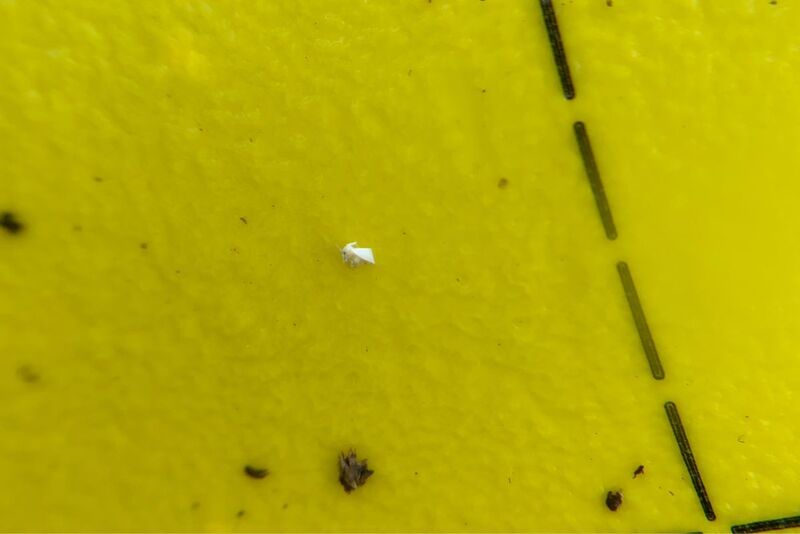
Identification:
The accurate identification of your whitefly species is particularly important considering that Bemisia whitefly (Bemisia tabaci) demands a distinct control strategy compared to the Greenhouse whitefly (Trialeurodes vaporariorum).
- This article “Harnessing the Power of Parasitic Wasps” delves deeper into the above point. It looks at the different control strategies, depending on the whitefly species you have identified.
Whiteflies undergo six developmental stages, with the first instar referred to as the crawler stage and the fourth larval stage considered the pupal stage.
Below are the differences between the Greenhouse Whitefly and the Bemisia Whitefly:
Greenhouse Whiteflies:
- Lays eggs at the top of plants, eggs turn brown to black after a few days.
- Fourth Instar (Pupa): Oval, white case with wax threads.
- Adult: Larger, whiter, triangular appearance from above.
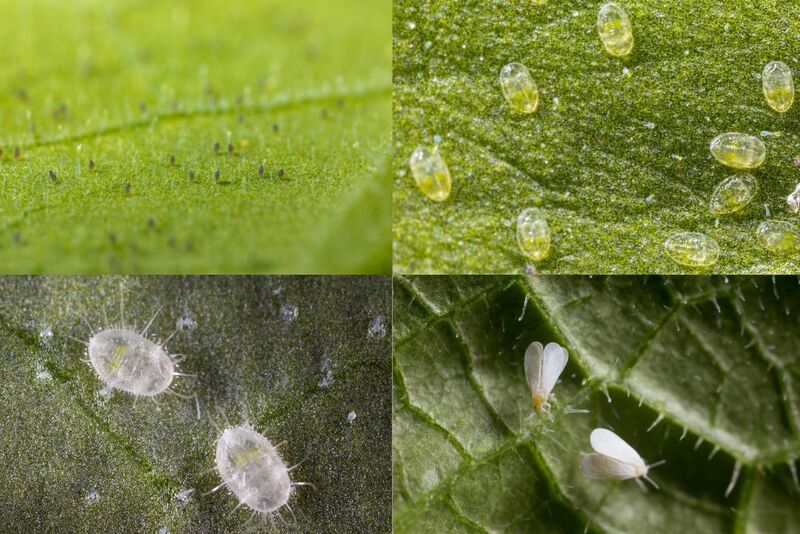
Bemisia (Tobacco/Silverleaf) Whiteflies:
- Lay eggs all over the plants, eggs start off as yellowish green turning brown after a few days.
- Fourth Instar (Pupa): Flat, transparent, or yellow with red-eyed adult visible.
- Adult: Smaller, yellower, more elongated appearance from above, with a gap in the wing.
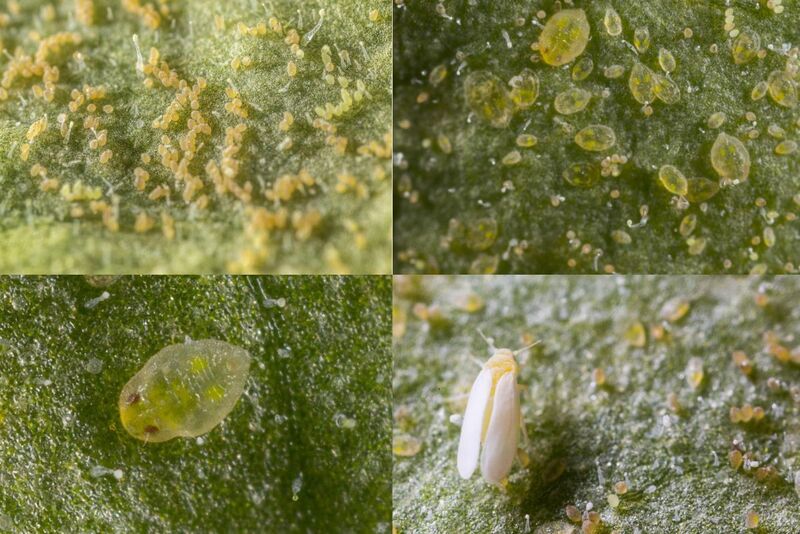
Whitefly Damage
Whiteflies can cause economic yield loss, both directly from damage to the plant, and indirectly because of a plant virus transmitted during feeding.
Plant damage can be broken down into four main types:
- Plant Sap Feeding – Whiteflies are phloem feeders, which means they feed directly from the plant tissue responsible for movement of photosynthates (the resulting product of photosynthesis) in the form of simple sugars such as sucrose. This type of feeding directly reduces plant growth and yield by stealing the energy the plant needs for development.
- Virus Transmission - Whiteflies, especially Bemisia, can transmit a host of viruses which can cause significant reduction in yield and quality. Bemisia is the primary vector for the Tomato Yellow Leaf-Curl Virus which is one of the most devastating viruses for a tomato crop. The Greenhouse Whitefly is a primary vector of Beet Pseudo Yellows Virus in greenhouse cucumber crops.
- Irregular Ripening – From nymphal feeding, Bemisia will cause a physiological disorder in plants. The fruits appear normal on the outside, but the internal tissue may be white, hard, and unripe.
- Honeydew – While feeding on the simple sugars, some are difficult to digest for whiteflies. So, instead, they secrete it in the form of honeydew which drops onto the leaves where they feed. The repercussions include:
-
- Aesthetic Impact - The honeydew creates a visible sheen and stickiness on the surface of the plant and its fruit, diminishing the visual appeal of crops. Particularly, in ornamentals (poinsettias) and vegetables (tomato, eggplant or pepper).
- Contamination – Anything and everything can stick to the honeydew, including the whiteflies themselves. This can cause contamination issues, especially in crops like Cannabis.
- Black Sooty Mold – Will often appear as a secondary issue stemming from the honeydew being deposited on leaves which sooty mold utilizes as a food source, reducing the plant’s photosynthesis and transpiration.
The Multipronged Approach
Mass Trapping:
Hang 2,000 small cards/ha. Space the cards throughout the crop in a grid-style pattern or install yellow roller tape along each row. You are doing this to capture as many whitefly adults as possible. This will reduce egg laying and whitefly movement in your growing space.
- Adjust the mass trapping rate for Bemisia. Utilize two tapes per row specifically for tomatoes and Bemisia. Place them strategically, positioning one between the crop and another above the plants' canopy.
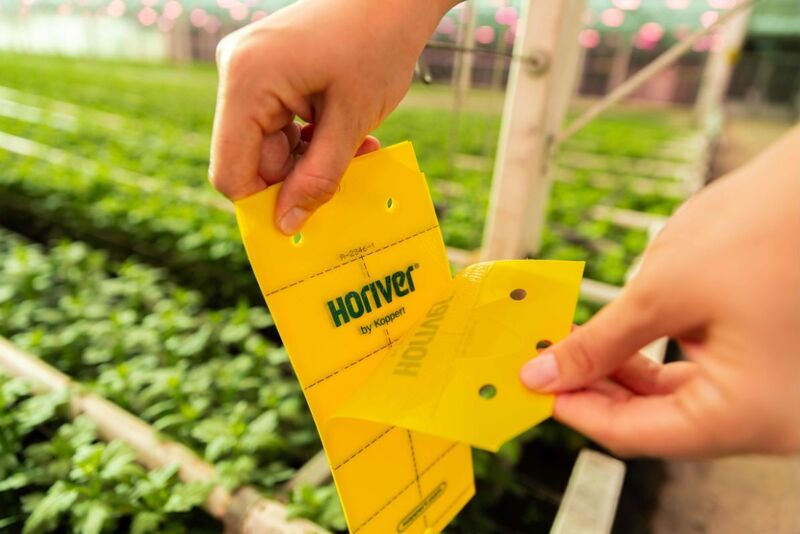
Parasitoids:
In the intricate battle against whiteflies, parasitoids emerge as crucial allies, specializing in parasitizing whitefly larvae while also engaging in host feeding. Understanding their characteristics and strategic deployment is vital for effective biocontrol. Two key parasitoids, En-Strip (Encarsia formosa) and Ercal (Eretmocerus eremicus), play distinctive roles in this fight.
En-Strip (Encarsia formosa):
- Identification: Adult females exhibit a distinctive black head and yellow abdomen. The rarely seen male is slightly larger and entirely black except for the clear wings.
- Parasitism: Targets whitefly larvae in the L3-L4 stages, with a preference for host feeding on L2.
- Egg Placement: Lays a single egg in each host larva.
- Pupal Stage: Following parasitization, the pupa transitions to a black or brown color within 14-21 days (about 3 weeks).
- Temperature Sensitivity: Effective at lower temperature ranges compared to E. eremicus.
- Distribution: Randomly searches the crop for infestations.
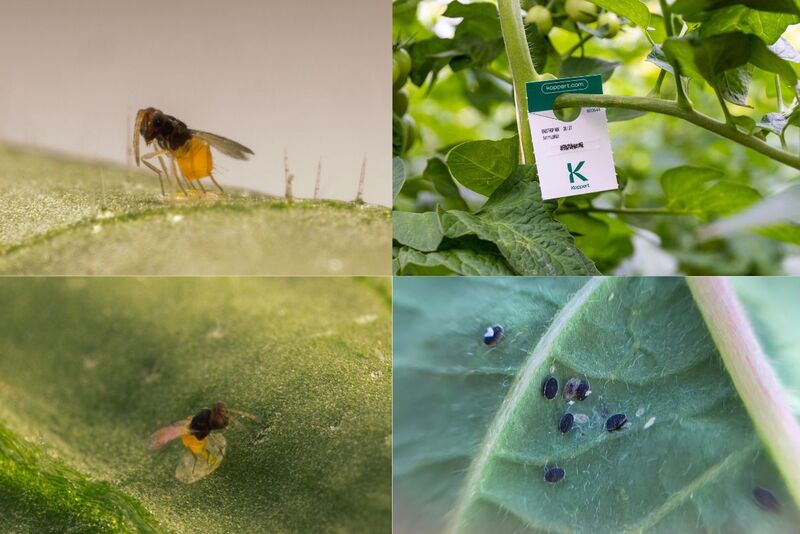
Ercal (Eretmocerus eremicus):
- Identification: Females are pale lemon yellow in color with green eyes and have clubbed antennae. The males have longer, elbowed antennae, and are yellowish brown in color.
- Parasitism: Specializes in parasitizing L2/L3 whitefly larvae, also host feeds.
- Egg Placement: Eggs are laid beneath the whitefly larvae, penetrating the fourth larval stage.
- Life Cycle: Exhibits a shorter lifespan than E. formosa, but lays eggs more rapidly.
- Temperature Sensitivity: Thrives in higher temperature ranges compared to E. formosa.
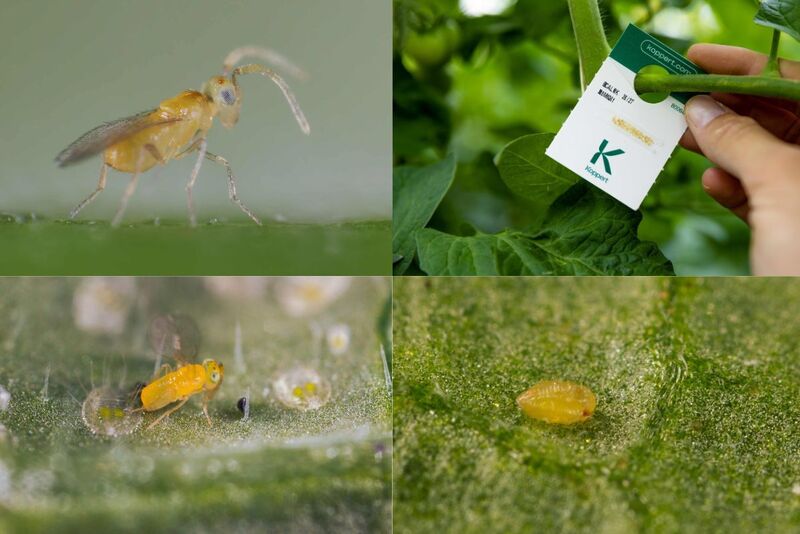
This article “Harnessing the Power of Parasitic Wasps” walks you through parasitism and host-feeding based control methods. Both of which are especially important depending on the type of whitefly species you have.
Predatory Mites:
Predatory mites, namely Limonica (Amblydromalus limonicus) and Swirski (Amblyseius swirskii), play a pivotal role (specifically in Poinsettia, Gerbera, and Cucumber crops) in combating whiteflies by targeting their eggs and larval stages.
Limonica (Amblydromalus limonicus):
- Preferential Feeding: Targets whitefly eggs and larvae, with a preference for newly laid eggs.
- Limitation: Not recommended for use in tomatoes due to the presence of leaf hairs.

Swirski (Amblyseius swirskii):
- Preferential Feeding: Targets whitefly eggs and larvae, with a preference for newly laid eggs.
- Limitation: Not recommended for use in tomatoes due to the presence of leaf hairs.
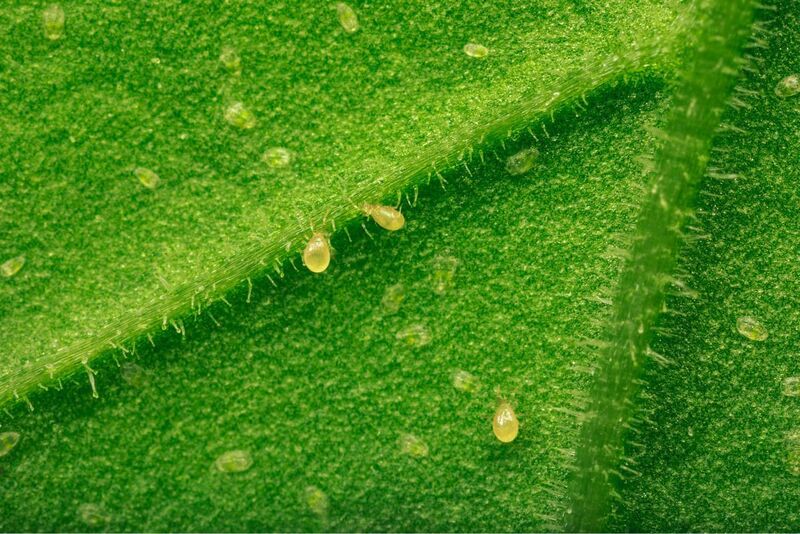
Note: While highly effective in most crops, it is crucial to note (again) their limitations in tomato cultivation. The leaf hairs stop them from being able to move far due to the trichomes and acyl sugars on the plant. In tomato crops, in place of predatory mites, use entomopathogenic fungi instead.
Entomopathogenic Fungi:
Mycotal, more commonly known as Lecanicillium muscarium (V6) stands as a formidable force against whiteflies (particularly in tomato crops). This entomopathogenic fungus demonstrates a multifaceted approach to infection, affecting larvae, pupae, and adults.
- Mode of Action: Acts by contact, penetrating the insect's epidermis and causing mechanical obstruction of respiratory tubes.
- Impact: Exhausts reserves, disrupts organ function, and induces the production of specific proteins within the insect.
- Symptoms: First signs of whitefly infection become evident 7-10 days (about 1 and a half weeks) post-spray.
- Egg Immunity: Mycotal does not affect whitefly eggs.
- Temperature Sensitivity: Infection is prominent at higher relative humidity levels, influencing both pupae and adults.
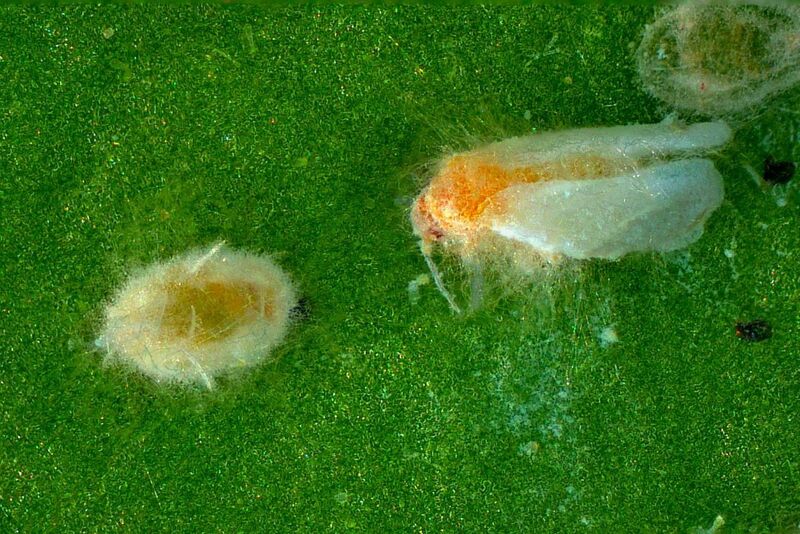
Hint: In tomatoes, once whitefly parasitism is up to 80%, spray Mycotal or Beauvaria bassiana (B. bassiana is known to work like Mycotal, as it is another type of entomopathogenic fungi). The entomopathogenic fungi will affect the whitefly adults and the non-parasitized larvae, but not the encased parasitized pupae. This is because the parasitized pupae are mummified, so the hard coating protects them from the fungi, allowing them to hatch like normal in a few days' time.
Hint: For Greenhouse Whitefly, you can use it selectively by spraying it at the tops of the tomato heads, taking most of the adults out of the equation. The parasitoids will be working lower in the crop where the L3/L4 whiteflies are.
Hint: Do not use entomopathogenic fungi at the start of your parasitism-based program (when you only have 20% parasitism levels). The parasitoids will be harmed with this application.
Alternative Biocontrol Methods:
Generalist Predatory Bugs: Chrysopa (the Green Lacewing), Thripor (the Pirate Bug/Orius), Aphidalia 100
The above predatory bugs are known to feed on the occasional whitefly, but they rarely ever substantially contribute to a whitefly IPM program. This is due to their preference for other types of food.
- Ladybugs (Aphidalia bipunctata) – prefers Aphids
- Chrysopa (Chrysoperla carnea) – prefers Aphids
- Orius (Orius insidiosus) – prefers Thrips
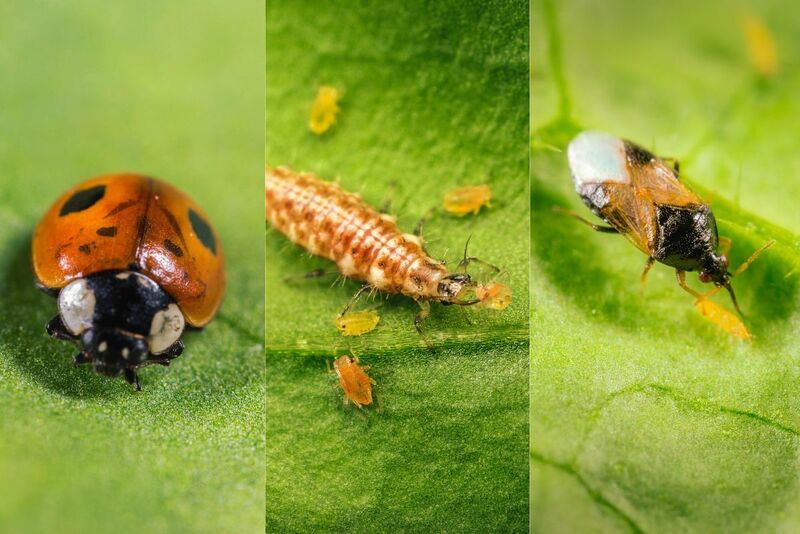
Delphastus catalinae
- This small ladybug feeds exclusively on whiteflies. Because of this, it is primarily used as a curative treatment (you need a large whitefly infestation to sustain this bio).
- All stages are eaten but prefers the younger stages.
- It is not an efficient predator to use because it is not a great searcher. The larvae and adults only feed upon contact. If food is lacking in its vicinity, this bio tends to die rather than leave the plant to search for higher prey density.
- It is ineffective in tomato crops due to leaf hairs.
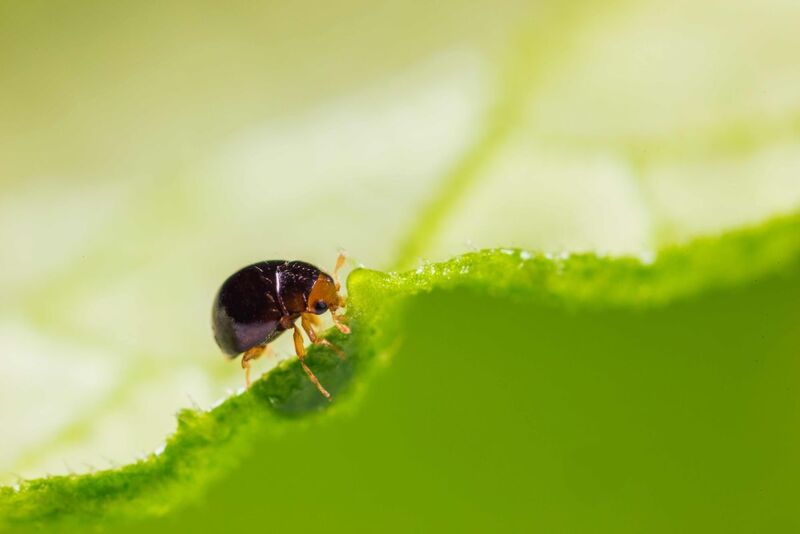
Dicyphus hesperus
- It is known to offer effective control in tomato production. However, it reproduces (predominately) in the bottom 2-3rds of the plant. So, it struggles to establish well in this crop due to growers deleafing practices.
- In high populations, it may also sting the mesophyll of the plant (the part of a leaf between the two thin surface layers), potentially damaging the fruits.
- It requires abundant prey to reproduce successfully.
- Not recommended in gerbera cultivation.
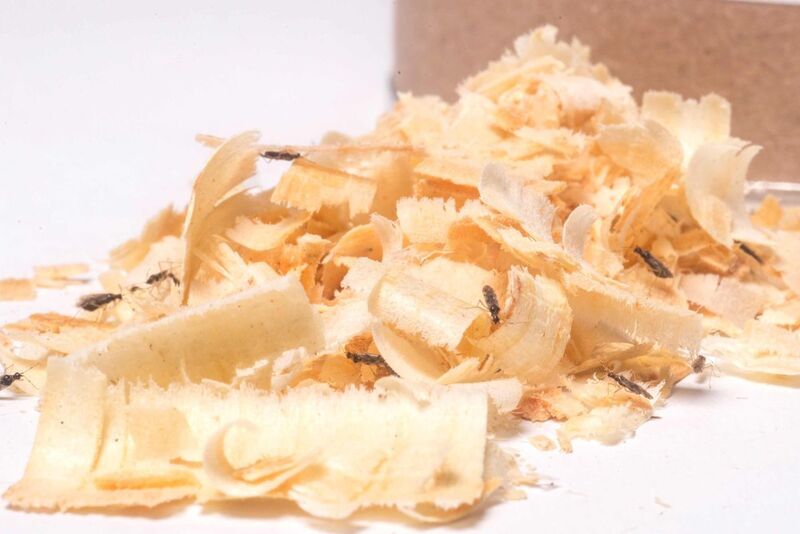
A Quick Summary of the Multi-Pronged Approach:
Sticky Cards and Roller Tape – Whiteflies will (almost always) be found on the cards/tape long before they are noticed in the crop. Placing sticky cards in the crop at planting, and monitoring them weekly, allows you to react quickly when they first show up in the crop. Cards will also significantly delay whitefly establishment (a great tool for mass trapping), as the removal of adults reduces the ongoing egg laying pressure.
Predatory Mites – Are a crucial tool in controlling egg/young larvae whitefly stages in many crops. They are an especially valuable tool when dealing with Bemisia whitefly populations as unlike parasitoids, predator mites are not species specific.
Parasitic Wasps – Parasitize whitefly larvae. This article explains more about parasitoids and why they are so important in a whitefly IPM program - “Harnessing the Power of Parasitic Wasps”.
Entomopathogenic Fungi – works against larvae, pupae, and adults. A great tool for tomato growers because predatory mites cannot survive long in this crop.
Conclusion
While various biocontrol agents offer promising avenues for whitefly management, careful consideration of their characteristics, limitations, and compatibility with specific crops is crucial. In the intricate dance between predators and pests, strategic choices pave the way for sustainable and effective whitefly control. Selecting the right arsenal and understanding the intricacies of each weapon will ultimately lead to victory in this ongoing battle for crop health and productivity.